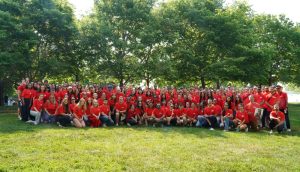By Christian Kern
Ideas are a finicky thing. They’re one of the core outputs of our industry, and everyone wants the best ones, but there is something so abstract and changing about ideas that it’s easy to get lost on the way. Like the ever-elusive “innovation,” ideas can carry different meanings for different individuals.
To start – let’s all agree that an idea is not a tactic. An idea is part of a larger platform that builds awareness and notoriety for a brand; at Initiative we call this “fame.” An idea is the revolutionary “thing” that joins all the tactics together. The tactics, conversely, work in service of the larger whole. Think of the idea as your short, poignant “what”; the tactics are the much more complex “how.”
As for finding that big idea, it might feel as easy as hosting a brainstorm session, but that is actually more of a starting point. A brainstorm session is the kick-starter for the ideation process. Ideas born in the brainstorm often require time and attention to evolve into something great.
Developing great ideas involves both divergent and convergent thinking. Divergent thinking (e.g. brainstorming) is about quantity and uses prompts and activities to generate as many thoughts and ideas as possible. Convergent thinking happens post-brainstorm when ideas are distilled into their strongest and most relevant forms. While some convergent thinking may occur during a brainstorming session, we rarely leave with a singular, fully fleshed-out idea.
Establishing a post-brainstorm process to question, build, and refine ideas is crucial in developing something award-worthy and marketable to clients. This process can be customized to fit your client or agency, but there are some basic building blocks to consider.
Establish a small but efficient task force that will be responsible for refining ideas. These individuals will identify the most promising concepts and further develop them by incorporating supportive tactics and enhancing the most captivating elements. They may also merge various brainstorm outputs to create a more comprehensive and impactful outcome. Giving individuals time and space to work and build on ideas solo is crucial to maintaining a fresh mind and a good workflow.
Conduct thorough research to assess the feasibility of ideas and measure them against the overall campaign strategy and client KPIs. This stage emphasizes the importance of convergence, eliminating ideas that don’t align with key objectives.
Conduct an idea workshop with a smaller group to fine-tune the selected ideas and ensure they are in their strongest form. During this session, address any issues, ensure alignment with the campaign strategy, discuss timelines, and incorporate stronger supporting tactics.
The final step is often the most difficult – simplification. We often add unnecessary complexity to our ideas, so much so that we lose sight of what initially excited us about them. Getting down to the “what” and “why” can help you sell an idea; a short-but-sweet elevator pitch will ensure that everyone who hears the idea can see its potential. You don’t need superfluous language to make an idea feel smart; the idea should feel smart and exciting all on its own.
As an agency that strives for fame-building ideas, one final gut-check we like to do is to ask ourselves: “will real human beings talk about this?” Great ideas win real headlines, not just industry headlines.
Christian Kern is director of strategy at Initiative Canada.
























